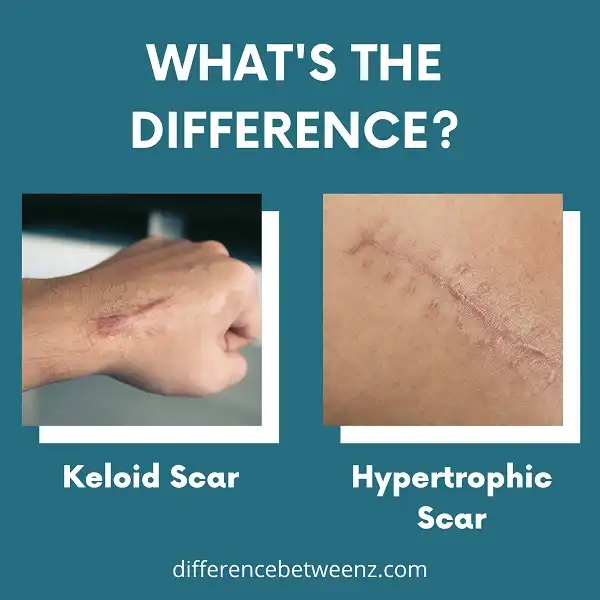When it comes to scarring, there are two main types: keloid and hypertrophic. While both can be unsightly, they are actually quite different. In this post, we’ll take a closer look at each type of scar and explain how they form. We’ll also discuss the treatment options available for each one. So, if you’re wondering what the difference between keloid and hypertrophic scars is, read on!
What is Keloid Scar?
Keloid scars are a type of raised scar that can occur following surgery, injury, or even acne. Keloids are caused by an overgrowth of collagen at the site of the wound. Keloids can be very large, and they may continue to grow for months or even years. Keloids can be itchy, painful, and cosmetically displeasing.
Keloids are more common in people with darker skin, but they can occur in people of all skin colors. There is no effective medical treatment for keloids, but they can be surgically removed. Keloid scars can be prevented by using pressure dressings or silicone gel sheets during wound healing.
What is Hypertrophic Scar?
Hypertrophic scarring is a condition where the body produces too much collagen in response to an injury. This excess collagen causes the scar to become raised and thickened. Hypertrophic scars can occur after burn injuries, surgeries, or other skin traumas. They may be itchy, painful, or cause problems with movement.
In some cases, hypertrophic scars may also lead to emotional distress. Hypertrophic scars typically improve over time without treatment. However, there are treatments that can help to reduce the appearance of the scar and improve its symptoms. These treatments include everything from silicone gel sheeting to steroid injections. If you are concerned about a hypertrophic scar, talk to your doctor about the best treatment options for you.
Difference between Keloid and Hypertrophic Scars
- Keloid and hypertrophic scars both refer to raised, thickened scars that can form after injuries to the skin. Keloid scars occur when the body produces too much collagen in response to an injury.
- They are raised above the surface of the skin and can be itchy or painful. Hypertrophic scars, on the other hand, are also raised above the surface of the skin but do not extend beyond the boundaries of the injury.
- They are caused by an excess of collagen but do not involve the overgrowth of tissue. Keloid and hypertrophic scars can both be treated with a variety of methods, including surgery, radiation therapy, and steroid injections. In some cases, they may resolve on their own over time.
Conclusion
Keloids and hypertrophic scars are both types of scarring, but they have different causes and treatments.


